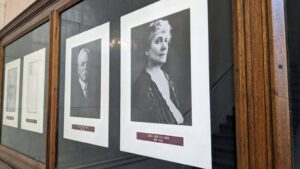
Western Reserve Historical Society of Cleveland
The Reverse Demolition of the Guardians of Traffic
by Pamela Dorazio Dean, Director, Italian American Museum of Cleveland
The 43-foot-tall statues, masterfully carved by Italian immigrants and now the namesake of Cleveland’s MLB team, once faced demolition — but the official behind the plan met his downfall instead.
The link is here
https://orderisda.org/culture/old-school/the-reverse-demolition-of-the-guardians-of-traffic/








